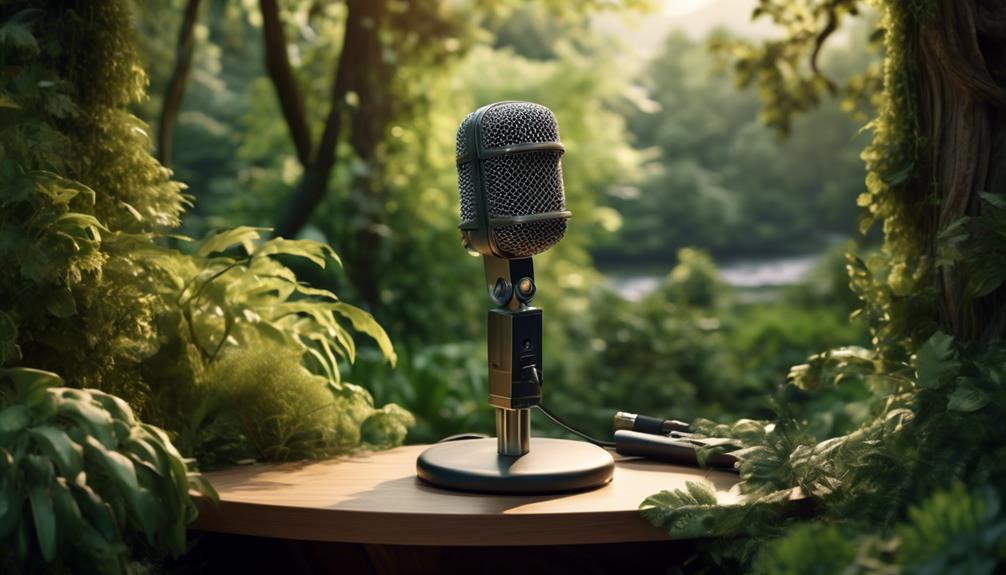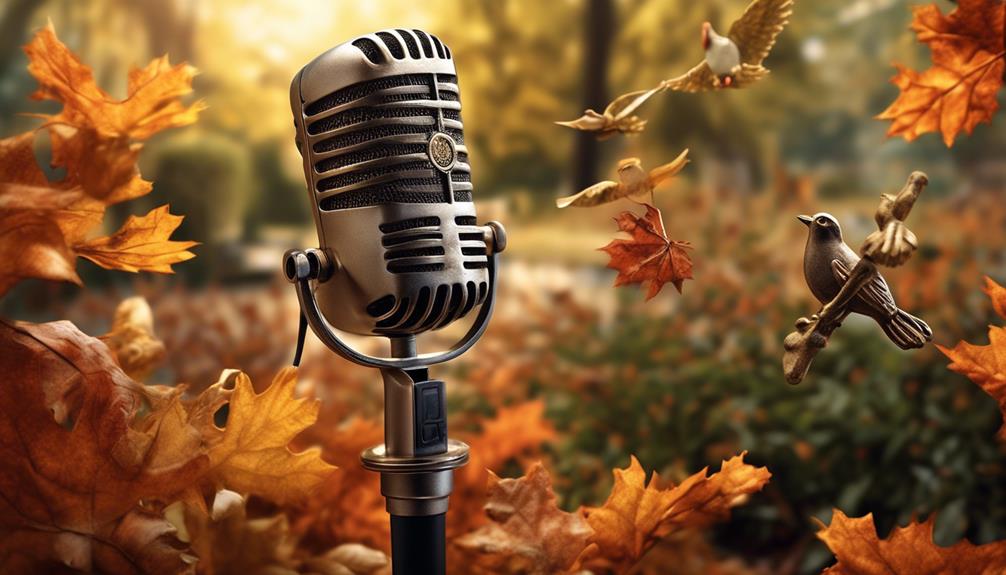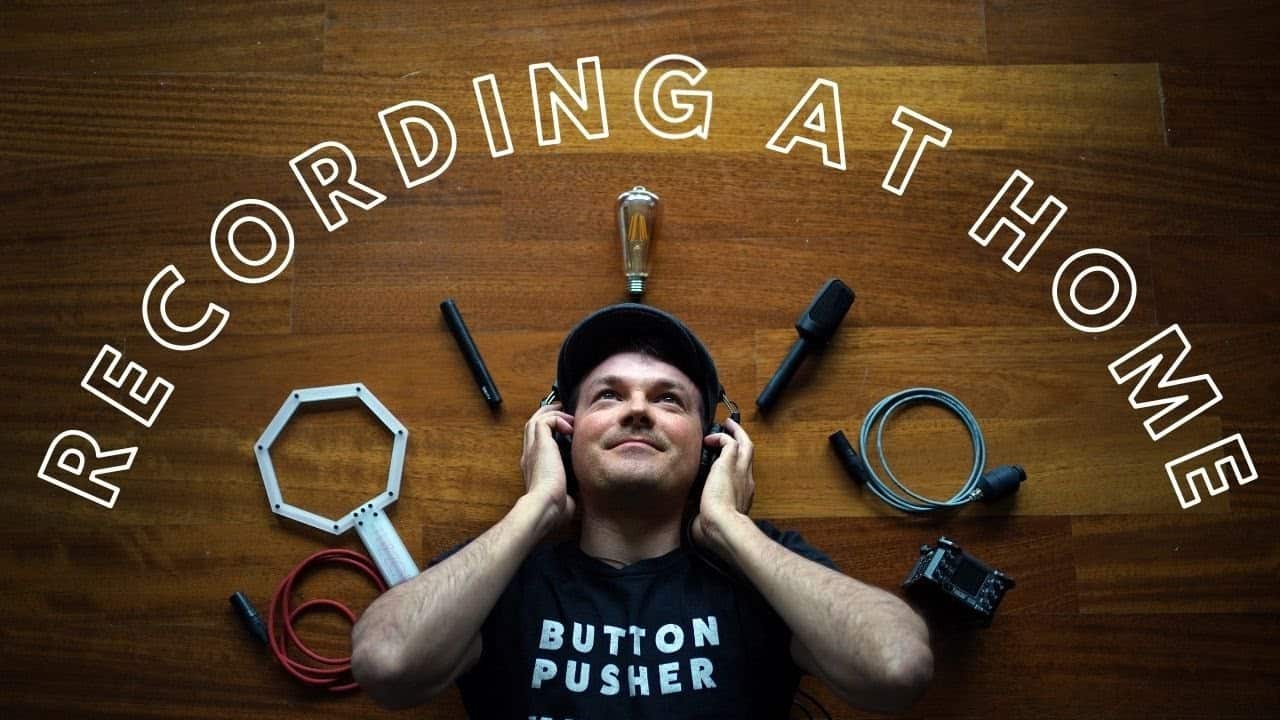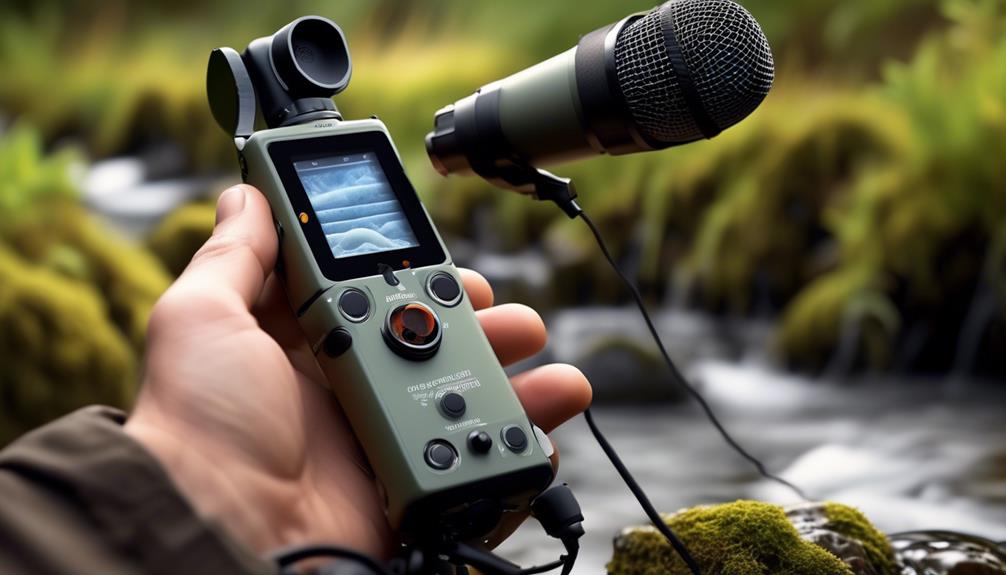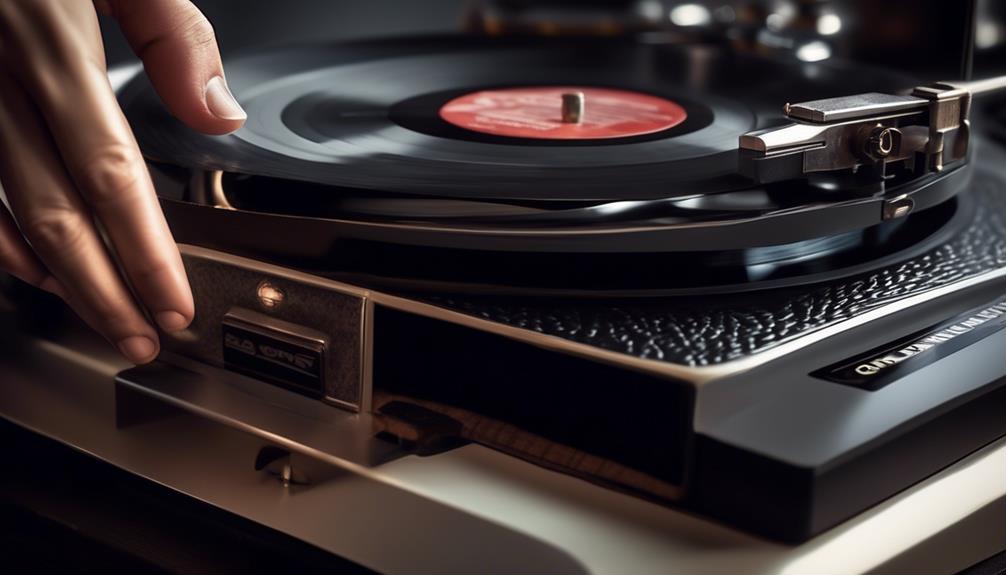We have all heard the term ‘field recording’ used, but what exactly does it mean to capture ambient sounds? Is it simply about recording any sound from the environment, or is there a deeper meaning behind it?
Well, let's just say that the answer might surprise you. And it's not just about the sound itself, but also about the way it can transport us to a different time and place without us even realizing it.
Key Takeaways
- Field recording techniques and equipment allow for the capture of ambient sounds in real-world environments.
- High-fidelity microphones and portable audio recorders are used to record the natural sounds of a particular environment.
- Stereo or binaural recording techniques can be employed to create a sense of spatial realism.
- The significance of ambient sound capture lies in enhancing realism in audio production and sound design, creating atmosphere and context in audio projects, supporting ambient music composition, and adding depth and realism to music production.
Understanding Field Recording Techniques
Understanding field recording techniques involves capturing ambient sounds in real-world environments using specialized equipment and methods. When we capture ambient sounds for field recordings, we aim to record the natural sounds of a particular environment. This technique is used to capture the desired ambient noise, whether it's the gentle rustling of leaves in a forest, the distant hum of traffic in a city, or the subtle echoes in a cathedral.
To achieve high-quality recordings, it's essential to use the right equipment, such as high-fidelity microphones and portable audio recorders. Additionally, understanding the environment and how to position the equipment is crucial.
Field recording enthusiasts often employ various methods to capture ambient sounds effectively, such as using stereo or binaural recording techniques to create a sense of space and depth in the recordings.
The Significance of Ambient Sound Capture

Why are ambient sound capture and field recordings significant in audio production and sound design?
Field recordings capture ambient sounds, which are essential for creating a sense of atmosphere and context in audio projects. The significance of ambient sound capture lies in its ability to add depth and realism to music production and sound design.
Here's why ambient sound capture is crucial:
- Enhancing Realism: Field recordings record ambient sounds that help in creating a realistic sonic environment.
- Creating Atmosphere: Ambient noises captured in field recordings contribute to the feeling of a specific time and place, enhancing the overall atmosphere of the audio project.
- Supporting Ambient Music: Field recording requires the capture of sounds that are instrumental in producing ambient music, as these sounds establish the mood and ambiance of the composition.
Capturing ambient sounds through field recordings isn't merely about adding background noise; it's about integrating the environmental elements that bring a sense of place and time to the audio project.
Exploring Environmental Soundscapes
Exploring environmental soundscapes involves immersing oneself in diverse acoustic environments to capture the nuances of natural and human-made sounds. It is about delving into the rich tapestry of auditory experiences that surround us, from the rustling of leaves in a forest to the bustling energy of a city street. Field recordings play a crucial role in this exploration, allowing the capture of ambient sounds that bring a sense of authenticity and depth to audio projects.
| Environmental Soundscapes | Description |
|---|---|
| Natural environments | Forests, oceans, deserts, and other untouched landscapes |
| Urban settings | Streets, markets, transportation hubs, and the dynamic urban soundscape |
| Indoor spaces | Architectural acoustics, room tones, and the interplay of human activity |
| Human-made elements | Machinery, industrial sounds, and the imprint of human intervention |
| Atmospheric phenomena | Wind, rain, thunder, and other elemental forces |
Capturing these diverse soundscapes requires a skilled recordist utilizing advanced recording techniques to minimize unwanted noise and faithfully represent the environment. This meticulous approach ensures that the recorded audio encapsulates the true essence of the surroundings, providing a window into the unique sonic character of each location. Through the art of field recording, we can preserve and share the immersive beauty of environmental soundscapes.
Tools and Equipment for Field Recording

Venturing into the realm of field recording requires a keen understanding of the tools and equipment essential for capturing ambient sounds in various environments. As field recordists, we must equip ourselves with the right gear to ensure high-quality recordings of ambient soundscapes. Here are the essential tools and equipment for field recording:
- Recording Equipment
- Audio recorders: These are fundamental for capturing the raw sounds of the environment.
- Microphones: A quality condenser microphone, such as the RDE NTG-1, is essential for capturing soundscapes with clarity and detail.
- Wind protection: Windshields and blimps are crucial for minimizing wind noise during field recordings.
- Field Recorder Accessories
- Shock mounts: These are crucial for isolating the microphone from handling noise and vibrations, ensuring clean recordings.
- Headphones: High-quality headphones are essential for monitoring recordings and ensuring the absence of unwanted background noise.
- Preparation and Techniques
- Planning: It's important to plan the recording session, considering factors like location, time of day, and potential ambient noise.
- Setting gain levels: Proper gain setting is crucial for capturing clear and balanced recordings.
- Patience: Field recording often requires patience to capture the perfect ambient sounds without disturbances.
Techniques for Capturing Authentic Sounds
To authentically capture ambient sounds during field recording, employing effective techniques is essential. The table below outlines some techniques for capturing authentic sounds in field recordings.
| Technique | Description | Application |
|---|---|---|
| Frequency Response | Utilize microphones with a wide frequency response to capture a broad range of ambient sounds accurately. | Essential for capturing subtle nuances in sound. |
| Wind Noise Reduction | Use windshields or dead cats to minimize wind noise, ensuring that the recorded sounds are clear and crisp. | Particularly important for outdoor recordings. |
| Stereo Recordings | Employ stereo recording techniques to create a sense of spatial realism, enhancing the immersive experience. | Ideal for conveying the ambiance of diverse settings. |
Frequently Asked Questions
What Is Field Recording Sound in Film?
Field recording sound in film brings the natural environment to life. It enhances storytelling through immersive experiences.
We use specialized audio equipment during location scouting to capture authentic background noise. Field recording is integral to the film industry's creative process, serving as a powerful sound design and storytelling tool.
It allows us to convey the essence of a scene, making the audience feel a part of the narrative.
How Do You Capture Ambient Sound?
We capture ambient sounds using various techniques. Microphone placement is crucial to capture the natural environment effectively. We use high-quality recording equipment to capture the nuances of background noise and environmental sounds.
Outdoor recording allows us to capture diverse soundscapes and acoustic environments. Afterward, we utilize audio editing to refine the captured sounds, creating a rich and immersive experience for our audience.
What Is the Meaning of Ambient Sound?
In a world full of hustle and bustle, ambient sounds define our surroundings. They encompass the natural environment, background noise, and atmospheric presence.
These environmental sounds capture the essence of our urban surroundings, adding depth and realism to the surrounding audio. Whether it's the local ambience of nature or the bustling urban environment, ambient sounds create a sense of atmosphere and context in audio projects, making us feel connected to our surrounding environment.
What Is a Field Audio Recorder?
A field recorder is a portable device designed for high-quality audio capture. It's used for nature and wildlife sounds, outdoor environmental recording, and remote location recording. This professional audio equipment captures wind, rustling leaves, water, flowing streams, wildlife in their natural habitats, and creates immersive soundscapes.
It's an essential tool for capturing the authentic ambient sounds of any location.
Conclusion
In conclusion, field recording is a vital tool for capturing the authentic sounds of our surroundings, adding depth and realism to audio projects.
It's like being a sonic archaeologist, unearthing hidden treasures of sound that transport listeners to different worlds.
So, next time you hear a rich, immersive audio experience, remember that it all started with a simple field recording.

